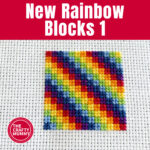This is the third of a series of posts on how I use Picasa.
I’m no expert.
I’ve taught myself. This works for me.
If you have any tips, please share!
My first post was about loading your photos into Picasa
Adjusting Colours…
My next step is usually to adjust to the colours in my photo. Sometimes I haven’t had enough light or the colours have been washed out by the flash. So a little tweaking can make a big difference.
- If you haven’t got your photo open, double click on the photo you want to edit to take you to the editing screen.
- There are two tabs to look at – “Tuning” and “Effects”. I start in the Tuning tab which looks like this:
- Now someone smarter than me could tell you what actually happens when you slide the sliders, but I have just played and looked at the results. Generally I find that they make my shots a bit brighter and lighter. I usually slide the first two sliders, but occasionally I play with the third one, the Shadows. It tends to make things darker, which usually isn’t what I’m after.
- The “Color Temperature” slider will make all the colours cooler (more blue) or warmer (more red).
- Picasa saves these changes as you do them so you don’t have to click any button to keep them. But you do have the option of clicking “Undo Tuning” to remove the changes you have made, or simply slide the sliders back to the far left.
- The other tab you might want to visit at this stage is the Effects tab. This allows you to create some great effects like Film Grain or Graduated Tint. I won’t go through them, but if you open a photo and have a play, you can see what each one does. Remember you can always choose not to apply the changes, or undo them if you don’t like them.
- The other thing I often need to do at this stage is retouch my photo. I often take shots of smaller items laid on a timber coffee table. Unfortunately this table has a couple of scratches on it which don’t look so good in my photo background. So I go back to the “Basic Fixes” tab and choose “Retouch”. This tool relies on you having another part of the photo that can replace the spot that you want to fix, and it works best on small areas, so if you want to fix a large area, you might try something else. (I’d love to know how to replace a larger portion of my background with Picasa. If anyone knows how, please share!)
- Back to retouching: In my photo I have a couple of small white spots to fix. I can zoom in to see them clearer with the slider at the bottom of the photo. Then I can change the brush size with the slider at the left.
- You want your brush size to be large enough to cover the spot you’re fixing, then click on that spot. Move your little circle to another area of the photo and you will see the target area change to look like the area your brush is sitting over. Find a match to the spot you are fixing that looks good, and then click in that spot. Your target area will change.
- I found it took me a bit of practice to get this tool right, but remember the “Undo Patch” and the “Cancel” buttons are there if you need them.
- When you’re happy with your touch-ups, click “Apply” to save them.
That’s I adjust colours and retouch small blemishes.
Please don’t hesitate to ask questions in the comments
and I’ll do my best to help you.
Next time I’ll look at adding borders and making photo collages.









I love Picasa too. It's so simple but I can edit my photos too.